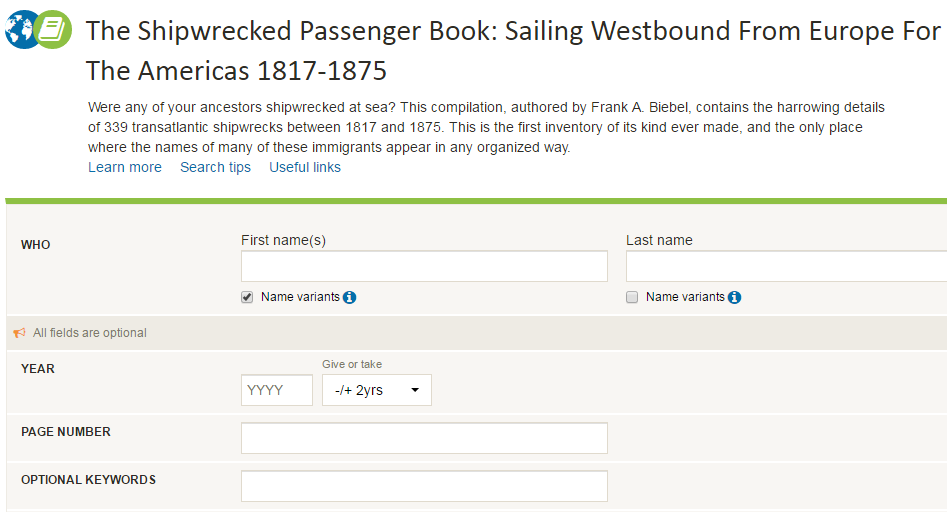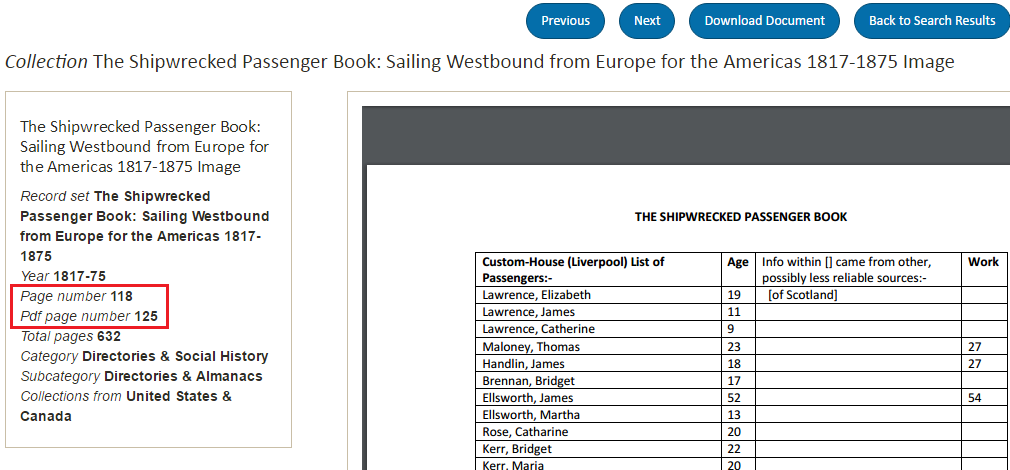Last week we added a useful and fascinating resource to our eLibrary - a compilation of 19th-century shipwrecks and their passengers by Frank A. Biebel.
Shipwrecked passenger lists did not often make it into standard immigration arrival databases; passengers found in this new addition to our digital collections may not be easy to locate elsewhere. Researchers will also find descriptions of each shipwreck along with the recorded names of passengers.
Beginning in 1819, the United States began officially collecting lists of passengers that arrived from foreign ports. These records are essential for those uncovering ancestral immigration stories, but what of those whose journey across the Atlantic took a more tragic turn?
There was no official policy of cataloging shipwrecks or their passengers, and up until this publication, many of the passengers and their stories had been lost to history.
Frank Biebel meticulously tracked down hundreds of shipwrecks from the 19th century and compiled them in a publication entitled The Shipwrecked Passenger Book: Sailing Westbound from Europe for the Americas 1817-1875, which was published in 2013.

This wreck can be found in this collection. New York: Published by Currier & Ives, c1873. Print via LOC
Inside the Collection
Each shipwreck is heavily researched, and the compilation is quite comprehensive. Biebel writes "most of what I found is new: I have not seen the majority of the 339 listed or covered elsewhere in print or on-line."
The collection mainly covers shipwrecks of European ships traveling to the United States, although some ships to Canada and other countries are included. Most of these 339 ships were wrecked and did not make it to port.
All details of each wreck are given, including:
- Port of embarkation
- Destination port
- Account of the wreck
- Names of known survivors
- Disposition of survivors
- Passenger lists (if available)
For those who survived, these records serve to document the story of a unique and rare immigration experience; for those who died, the records serve as a particularly tragic death record. In either case, a discovery here will become a story worth telling.
The principal sources used by Bibel were newspaper accounts and, in some cases, passenger lists from the port of departure that were submitted to the immigration authorities of New York. Crew only, military and fishing vessels are excluded.
Search Tips
Our eLibrary contains two versions of this publication - one designed for search, the other designed for browsing. We will show you how to use both in conjunction, which we recommend for optimal results.
Even if you aren't searching for an ancestor, this book is still quite enjoyable. It contains many gripping tales of peril on the high seas and paints an extraordinary picture of the dangers our immigrant ancestors faced. Even if those dangers were never actualized for your family, they were very much a part of their world.
For those interested, Biebel has selected what he feels are the most interesting shipwreck stories and put them in an early section of the book.
If you're looking for an ancestor, head over to the searchable publication and search by name or year. If you're looking for a particular shipwreck, you can search by ship name in the "optional keywords" section.

Once you have located the person or ship you're seeking, note the page number on the image, as well as the PDF page number:

You can navigate to the surrounding pages by clicking the "previous" or "next" button seen above. For a smoother browsing experience, write down the page numbers, and head over to the browseable publication.
Enter the PDF page number to navigate to the page you were just looking at. Make sure to read the surrounding pages to discover a narrative of the shipwreck and examine any other passengers that might be related to your subject.
We'll be sharing some of the most interesting stories from this book in the coming weeks, but make sure to share your discoveries or shipwrecked passenger stories in the comments!
